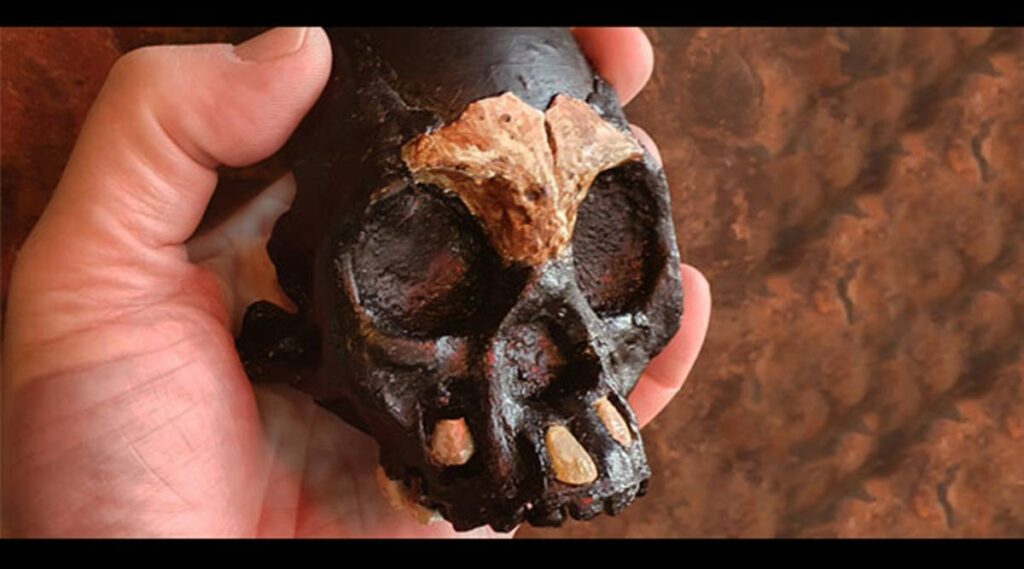Fossil of early hominid child who died almost 250,000 years ago found in South Africa
The fossil remains of an early hominid child who died almost 250,000 years ago have been discovered in a cave in South Africa by a team of international and South African researchers.
The team announced the discovery of a partial skull and teeth of a Homo Naledi child who died when it was approximately four to six years old.
The remains were found in a remote part of the cave that suggests the body had been placed there on purpose, in what could be a kind of grave, Professor Guy Berger of the University of Witwatersrand in Johannesburg, who led the team said in an announcement Thursday.

The placement “adds mystery as to how these many remains came to be in these remote, dark spaces of the Rising Star Cave system,” he added.
Homo Naledi is a species of archaic human found in the Rising Star Cave, Cradle of Humankind, 30 miles northwest of Johannesburg. Homo Naledi dates to the Middle Pleistocene era 335,000–236,000 years ago.
The initial discovery, first publicly announced in 2015, comprises 1,550 specimens, representing 737 different elements, and at least 15 different individuals.
“Homo Naledi remains one of the most enigmatic ancient human relatives ever discovered,” said Berger. “It is clearly a primitive species, existing at a time when previously we thought only modern humans were in Africa.”
He added that “its very presence at that time and in this place complexifies our understanding of who did what first concerning the invention of complex stone tool cultures and even ritual practices.”
The new discovery is described in two papers in the journal, PaleoAnthropology.





